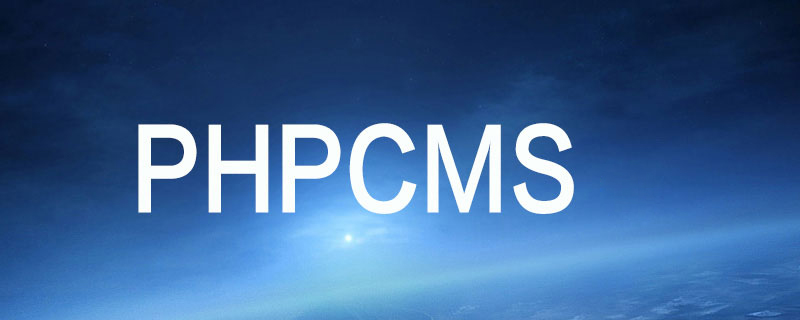How to write an interface for phpcms api

How to write an interface for phpcms api?
I recently developed a CRM system by myself. I was thinking that if it can be sold in the future, I can dynamically call the recommended information of my website through the interface. It can be regarded as a kind of advertising! So I tried to use phpcms to develop a simple api interface
phpcms v9 develops a simple api interface (for novices!)
The api interfaces of phpcms v9 are all stored in api folder, the access path is http://www.XXX.com/api.php?op=count&...., the other op=count are your specific api files, so I started based on this rule Develop!
(1) Step 1: Create the file demo.php in the api folder of the website, code:
<?php
defined('IN_PHPCMS') or exit('No permission resources.');
if($_GET['catid'] && $_GET['num']) {
$catid = intval($_GET['catid']); //用来接收请求的栏目id
$num = intval($_GET['num']); //用来接收获取数量
}
$modelid =1; //设置你要调用栏目的模型id
$db = pc_base::load_model('content_model');//引入content模型
$db->set_model($modelid); //设置模型id,如果是其他非文章模型可以不需要设置这个
$arr = $db->select(array('catid' => $catid),'*',$num); /调用所请求栏目id下的文章
$r = json_encode($arr); //转换为json类型
//jsonp请求的固定写法,可以解决跨域问题,引入callback回调函数
echo $_GET['jsoncallback'] . "(".$r.")";
?>(2) Use ajax to send the request on the requesting page
<script>
$(function(){
$.ajax({
url:'http://www.XXX.com/api.php?op=demo&catid=28&num=10',
dataType:'jsonp', //jsonp类型
jsonp:"jsoncallback", //回调
type:'get',
success:function(data){
var data=eval(data); //转化为json对象
$.each(data, function(index, p){
html = "<li>";
html += "<a href='"+ p.url +"' target='_blank'>"+ p.title +"</a>";
html += "</li>";
$("#test").append(html); //追加到id=test的div里边
})
},
error : function() {
console.log('fail');
}
});
});
</script>ok Done! In this way, you can call things in your own website across domains!
The effect is shown in the picture:

PHP Chinese website, a large number of free PHPCMS tutorials, welcome to learn online!
The above is the detailed content of How to write an interface for phpcms api. For more information, please follow other related articles on the PHP Chinese website!

Hot AI Tools

Undresser.AI Undress
AI-powered app for creating realistic nude photos

AI Clothes Remover
Online AI tool for removing clothes from photos.

Undress AI Tool
Undress images for free

Clothoff.io
AI clothes remover

AI Hentai Generator
Generate AI Hentai for free.

Hot Article

Hot Tools

Notepad++7.3.1
Easy-to-use and free code editor

SublimeText3 Chinese version
Chinese version, very easy to use

Zend Studio 13.0.1
Powerful PHP integrated development environment

Dreamweaver CS6
Visual web development tools

SublimeText3 Mac version
God-level code editing software (SublimeText3)

Hot Topics
 1376
1376
 52
52
 What framework is phpcms?
Apr 20, 2024 pm 10:51 PM
What framework is phpcms?
Apr 20, 2024 pm 10:51 PM
PHP CMS is a PHP-based open source content management system for managing website content. Its features include ease of use, powerful functionality, scalability, high security, and free open source. It can save time, improve website quality, enhance collaboration and reduce development costs, and is widely used in various websites such as news websites, blogs, corporate websites, e-commerce websites and community forums.
 How to jump to the details page in phpcms
Jul 27, 2023 pm 05:23 PM
How to jump to the details page in phpcms
Jul 27, 2023 pm 05:23 PM
How to jump to the details page in phpcms: 1. Use the header function to generate a jump link; 2. Loop through the content list; 3. Get the title and details page link of the content; 4. Generate a jump link.
 WeChat Login Integration Guide: PHPCMS Practical Combat
Mar 29, 2024 am 09:18 AM
WeChat Login Integration Guide: PHPCMS Practical Combat
Mar 29, 2024 am 09:18 AM
Title: WeChat Login Integration Guide: PHPCMS in Action In today’s Internet era, social login has become one of the essential functions of a website. As one of the most popular social platforms in China, WeChat’s login function is also used by more and more websites. This article will introduce how to integrate the WeChat login function in the PHPCMS website and provide specific code examples. Step 1: Register a WeChat Open Platform Account First, we need to register a developer account on the WeChat Open Platform and apply for the corresponding development permissions. Log in [WeChat open platform]
 What does phpcms mean?
Apr 20, 2024 pm 10:39 PM
What does phpcms mean?
Apr 20, 2024 pm 10:39 PM
PHPCMS is a free and open source content management system (CMS) that features: open source, modularity, flexibility, user-friendliness and community support. It can be used to create various types of websites, including corporate websites, e-commerce websites, blogs, and community forums. Technical requirements include: PHP 5.6 or higher, MySQL, MariaDB or PostgreSQL database, and Apache or Nginx web server.
 Isn't phpcms free?
Mar 01, 2023 am 10:24 AM
Isn't phpcms free?
Mar 01, 2023 am 10:24 AM
phpcms is not completely free. phpcms is an open source cms system, but open source does not mean free. It has two versions: free version and commercial version. The free version is limited to personal non-commercial use, while the commercial version requires purchasing a license; individuals can use it for research, and if it is commercial application , you need to pay a certain fee.
 What database does phpcms use?
Feb 21, 2023 pm 06:57 PM
What database does phpcms use?
Feb 21, 2023 pm 06:57 PM
phpcms uses mysql database. phpcms is a PHP open source website management system, developed using PHP+MYSQL as the technical basis. PHPCMS V9 adopts OOP method to build the basic operating framework. The supported PHP version is PHP5 and above, and the supported MYSQL version is MySql 4.1 and above.
 What versions of phpcms are there?
Jun 14, 2023 pm 01:13 PM
What versions of phpcms are there?
Jun 14, 2023 pm 01:13 PM
There are two well-known versions of phpcms, namely: 1. phpCMS4, which supports custom URL rules. The website management background is beautiful and easy to use, and has many front-end plug-ins, which can freely expand functions; 2. phpCMS2008R1, which supports multi-language, multi-site management, and page The manager is convenient, flexible, very lightweight, and runs fast.
 How to change the site name in phpcms
Feb 24, 2023 am 09:29 AM
How to change the site name in phpcms
Feb 24, 2023 am 09:29 AM
How to modify the site name in phpcms: 1. Use the administrator to log in to the backend page; 2. Find the "Settings" option in the top menu bar and click it, then find "Site Management" in the menu on the left; 3. Find the item that needs to be modified site, click the modify link to the right of the site domain name; 4. Modify the site name in the pop-up window.




